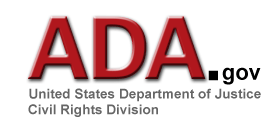
Have you ever noticed college leadership rolling eyes when the topic of digital accessibility comes up for discussion? It is not surprising if you’ve seen this more than once.
No one to this date has made a clear-cut argument in favor of value return on accessibility in higher education. Student retention and success come closest to value return on accessibility. The logic here points to the benefits universities will derive from accessible websites and electronic documents by offering modern, technology-intense, multisensory learning experience. This would ultimately turn today’s students into tomorrow’s alumni donors and benefit universities/colleges in myriad ways.
Return on Accessibility
Student retention and success arguments that focus on value return treat students as customers in any market-driven enterprise. The customer satisfaction is the key consideration. The logic might look like this:
- The higher the student grades, the higher the student retention
- The higher the student retention, the higher the graduation rate
- The higher the graduation rate, the higher the likelihood of good paying jobs.
The logic is that the accessibility of digital resources will contribute to strong intellectual development of students and their satisfaction with college experience. This, in turn, will benefit the institution in various ways. A report from the Alumni Factor
link opens in an external window
presents this connection in the following manner:
Simply put, for many graduates their college experience is an important part of their identity, and the higher the regard they have for their college, the more likely they are to donate to it.
A positive college experience motivates today’s students and tomorrow’s alumni to make financial contributions to different program initiatives, construction projects, activities, endowments, among other such support.
This further improves institution’s reputation as a provider of quality education and thus attracting high caliber future students.
Where do Accessibility and Students with Disabilities Fit Here?
If we focus only on students with disabilities, return on investing in digital accessibility is a loss making proposition.
The National Center for Education Statistics data
link opens in an external window showed that in 2011-12, the percentage of U.S. college students who reported having a disability was only 11 percent. This is a self-reported or student-driven data, meaning many choose not to disclose disability to their higher education institutions and suffer the negative consequences of inaccessible digital resources.
Proper web layout and structure, alternate text, appropriate color contrast, transcripts, captions, among other accessible features, significantly improve the learning experience for college students with disabilities. Needless to say, this also improves their performance and success.
A recent pilot study of online and distance learning education at the University of South Florida’s St. Petersburg campus
link opens in an external window
demonstrated:
- Students with disabilities reported having benefited from the captions and interactive transcripts
- Most of these students were not registered with the office of disability services
- Interactive transcripts improved student performance more than captions.
A significant result of this research is to demonstrate that many more students with disabilities would benefit from attention to digital accessibility of course content. These students do not report their disabilities to the designated offices of disability services and thus do not use their services>
With only 11 percent reported students with disabilities on university campuses,
link opens in an external window
this in no way will drive colleges to invest significant resources in digital accessibility.
But Wait! What if Digital Accessibility Benefits other Students Too?
Growing evidence shows that accessibility features in higher education curriculum offer greater choice of accessing instructional materials to all students and serve as effective learning aids. A nationwide research
link opens in an external windowwith 2,124 participants from various higher education institutions across the United States showed that accessibility features such as captions benefit all students. Benefitting primarily hard-of-hearing students, captions are blocks of text that appear at the bottom of a video that replicate the spoken audio. They also present in a textual form sound-related features of a visual.
Close to 35 percent participants of this survey said that they always or often used closed captions when available. Those for whom English was the second language, 44 percent claimed they benefited from captions. Those enrolled in some form of academic accommodations (athletes or other academically-challenged students), 48 percent said they used captions as learning aids.
Transcript is another accessibility feature that benefits low vision or blind students but also serves for non-disabled students as an effective learning aid. A separate document that can be read or printed that presents the entire spoken audio of a video, transcript was always or often used by 19 percent participants. Students that had trouble maintaining focus, 22 percent used transcripts. Those who benefit from academic accommodations, 27 percent benefited from them. Learners of English as a second language claimed to have used transcripts with little over 22 percent.
Accessibility Now a Valuable Investment?
This broadening of the user-base of accessibility and connecting it with retention and success of the general student population certainly gets buy-in from university/college leadership.
A positive college experience will motivate today’s students and tomorrow’s alumni to make financial contributions. They include contributing to new program initiatives, construction projects, activities, endowments, among other such development support.
And do not forget, “success begets success.” Successful students and alumni shine a positive light on the institution’s achievements. This further improves reputation of the college as an institution of quality education, thus attracting high caliber prospective students.
Putting resources in digital accessibility is to invest in the next frontier of college learning. Multisensory learning is the focus of all higher education technologies, contributing immeasurably toward student retention and success. Investing in digital accessibility today for student success is the hallmark of a forward-looking leadership.
Continue reading “Digital Accessibility in Higher Education and the Hard Value Return”

